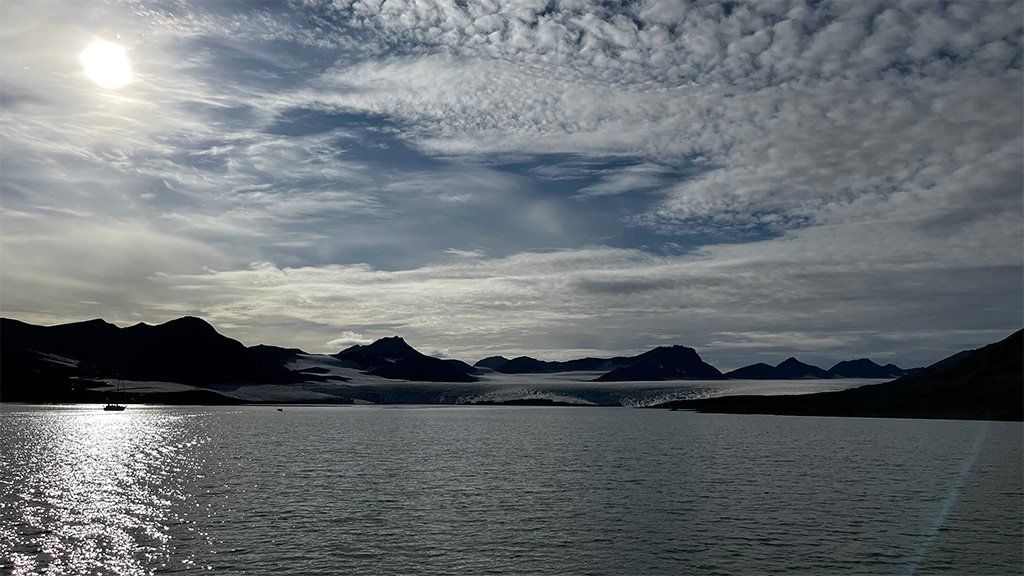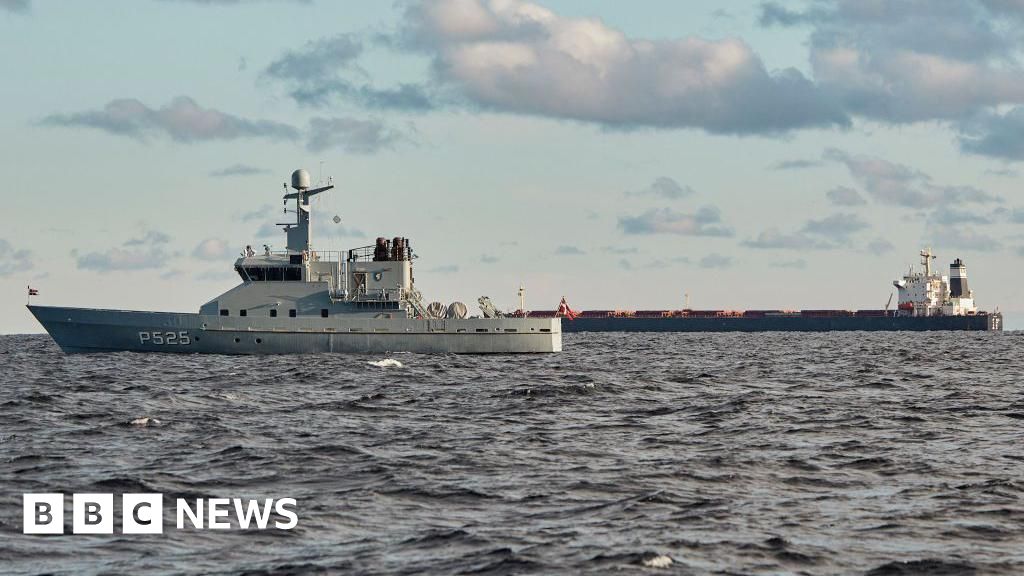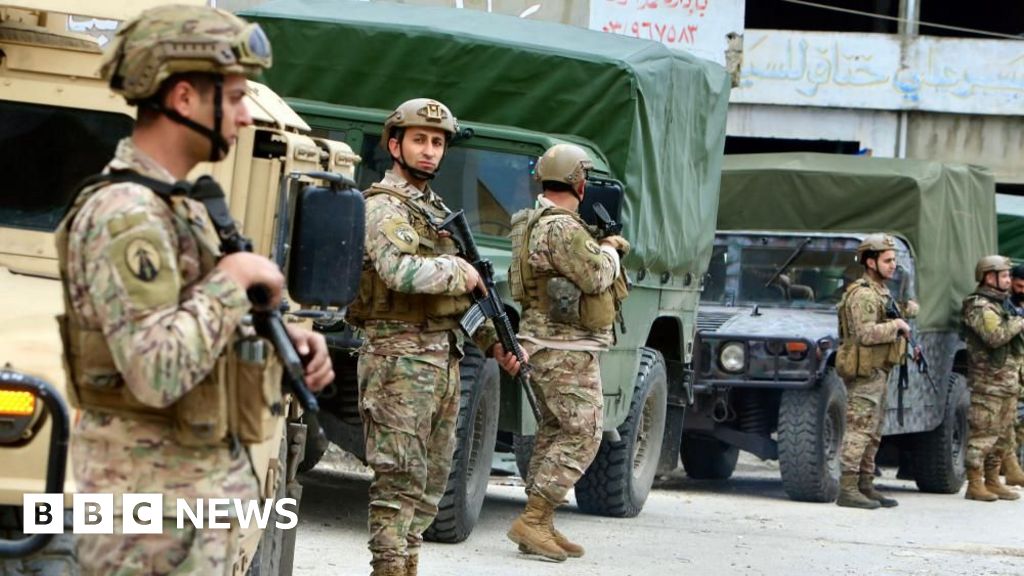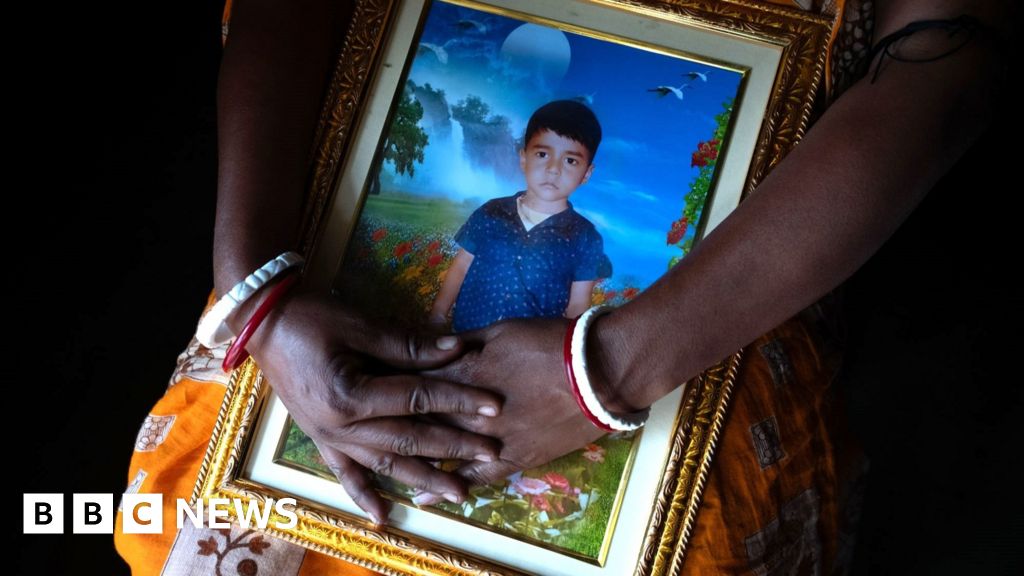ARTICLE AD BOX

By Nick Beake and Kate Vandy in Svalbard
BBC News
Deep inside the Arctic Circle, the Norwegian archipelago of Svalbard is home to the world's northernmost permanent settlement, Longyearbyen, which is estimated to be heating at six times the global average. So what is being done to save it?
Svalbard's church is a blood-red wooden building with bright white trim - the most northerly place of worship in the world.
Its priest, Siv Limstrand, has been here for only three years but is shocked by the impact of climate change she has witnessed in that time.
"Every Sunday when we gather for worship, a part of our intercessions is always about climate change and its threats," explains Limstrand. "We know that the clock is ticking."
Siv Limstrand
Life on Svalbard feels about as precarious as it gets in a place that is not at war or riven with famine.
You need a gun whenever you venture from the main road of Longyearbyen, the capital of this Norwegian archipelago, because of the risk of encountering polar bears.
Diminishing ice has reduced their hunting ground which means it is harder for them to find seals. So more bears are exploring built-up areas in search of food and are now eating reindeer - not their usual prey.
- Listen to the documentary Svarlbard's climate change fight on BBC Sounds - or download the podcast
And with the rising temperature causing an unprecedented thawing of frozen ground, the growing risk of avalanche hangs over this Arctic community in winter. In summer, mudslides are more likely than ever to wipe out everything in their path.
You feel on borrowed time here in what successive scientific studies have found is the fastest-warming place on Earth.
Experts from the Norwegian Polar Institute are among those who calculate it is heating six times faster than the global average.
The consensus is that the temperature in Svalbard has jumped 4C in the past 50 years.
Wildlife and human life are now in a struggle to survive. This is why Limstrand's congregation is praying for help.
To show us the impact of man-made climate change, she leads us down to the church's cemetery.
Limstrand's church cemetery
Rows of white wooden crosses appear to almost cling to the side of a mountain, surrounded only by a few reindeer and the muted colours of summer tundra plants.
To the left and to the right of the cemetery are tunnel-like ditches in the ground, which curve up into the steep mountain behind. These ditches are the remnants of a landslide that could have washed the entire cemetery into the river below. It missed by a matter of metres.
"When I look at it, it's like a wound," sighs Limstrand, "and it reminds me somehow of our wounded planet."
Now the risk of landslides or avalanches has hugely increased, and the cemetery is to be relocated. As Limstrand tells us: "This is no longer a safe place for the living or the dead."
Scanning for wildlife through her binoculars, Arctic explorer Hilde Fålun Strøm lets out an excited gasp. She has spotted three polar bears, dozing together on the edge of a pavlova-shaped glacier.
Fålun Strøm has taken us out on an overnight expedition aboard her boat to show us the impact climate change is having on nature in Svalbard.
"To survive as a polar bear now, I think you have to be super good at hunting because the main source of food, the seals, are diminishing," she explains. "And the ice that both the seals and the bears are dependent on is also diminishing."
Hilde Fålun Strøm
Since the 1980s, the amount of summer sea ice has halved and some scientists fear it will be gone altogether by 2035.
This - combined with an avalanche that hit Longyearbyen in 2015 - focused her mind.
"The avalanche claimed the lives of two people. They were Svalbard's first deaths from climate change," she says.
Brightly coloured houses in Svalbard
"We no longer felt safe in our own homes," she says. "The power of nature which I had always loved seemed to now be totally out of control."
For Fålun Strøm, it was a turning point in her life.
She left behind her day job in tourism and set up a project called Hearts in the Ice, alongside fellow explorer, Canadian Sunniva Sorby. For two years they lived alone and off-grid in the most remote Arctic wilderness, spending their time working as "citizen scientists".
"I had this climate anxiety and I just wanted to become actively engaged in the solutions," says Fålun Strøm. "I still think there's time to save something."
Few understand the archipelago better than Kim Holmén, a special advisor at the Norwegian Polar Institute who has been studying Svalbard for more than 40 years.
Incredibly tall, with a long, wispy white beard, sporting a bright red coat and trademark pink bobble hat, he leads us through a mess of rocks and brown mud on the way to what is the foot of the Longyear glacier.
Today he is our polar bear guard as well as scientific eyes and ears. He also carries a gun, although this is a standard accessory in Svalbard.
Holmén points to the top of the hillside which he says marks the level of the glacier 100 years ago.
In that time, he estimates 100m (328ft) of elevation has been lost. The melted ice has raised sea levels across the world.
"We have already committed the planet to further warming," he says. "So we expect 20 years of further warming even if we, by magic, stopped every emission today."
The fate of this place is inextricably linked to that of the world as a whole.
Despite its extremity, Svalbard is a geopolitical hotspot. And even here, the war in Ukraine is having an effect. The conflict has now halted cooperation between climate scientists in Russia and in the West, Holmén says.
"One of the consequences is that the official exchange with Russian institutions is not possible at this time. And of course, half of the Arctic is Russian coastline."
Already, this has weakened the fight against climate change, Holmén believes.
"If we are unable to share knowledge and data in both directions it will hamper our ability to understand what is happening," he says. "We need each other in order to do good science."
Meanwhile, 8km (five miles) into Svalbard's mountainside, a bead of sweat trickling down Bent Jakobsen's blackened face is illuminated by the light of a helmet.
Bent Jakobsen
This is Norway's last remaining coal mine.
"Imagine a big cake with a lot of cream in the middle," explains Jakobsen, a production foreman. "You want to take out as much cream as you can without the cake collapsing so that's basically what we do. We love cream. And coal."
He is showing us this subterranean world before it closes for good.
His company, the Norwegian state-owned Stoke Norske, has said it will soon shut the mine as part of its switch to renewable forms of energy.
"It makes me sad," he sighs. "I've been here all my life. Knowing it was a mining town and now it's coming to an end. It's more and more of a tourist town - a La La Land."
Tourism has long overtaken coal mining as the main source of income on Svalbard.
A view from the mine
But the tens of thousands of visitors every year, arriving by plane and ship, are putting further strain on this fragile environment.
Abandoning coal, at least, will reduce Svalbard's dizzyingly high carbon footprint.
But Jakobson is not convinced.
"If you can't get it from here, you will take it from somewhere else," he says. "They haven't found the perfect substitutes yet. So coal is still here to stay."
However, two weeks after we visit, there is a big development. Store Norske is performing a U-turn. It says it will now delay the closure of the mine. The company says Europe's energy crisis - fuelled by the war in Ukraine - makes it a more profitable operation now.
Which raises the question - if the fastest-warming place on earth can't give up fossil fuels, what hope for everywhere else?
The Deputy Mayor of Longyearbyen, Stein-Ove Johannessen, agrees that a new green strategy should have been developed years ago. "The tough answer to that is that we probably haven't been paying enough attention," he says. "But we have been really awakened in these last past years and seen that we actually need to do things."
But Johannessen argues that being so remote, coal was a vital way of providing energy security for the archipelago.
"Having our own local coal production to give secure energy for the local community has been very important for us. But I can agree that we should have started a long time ago."
Like communities across the planet, when it comes to climate change Svalbard is simply not doing enough, quickly enough.
This year's global Climate Change Conference in Egypt will be difficult - dominated by the ongoing impact of the war in Ukraine. Governments around the world will be asked once again what sacrifices they're willing to make today - to save tomorrow.

 2 years ago
65
2 years ago
65








 English (US) ·
English (US) ·